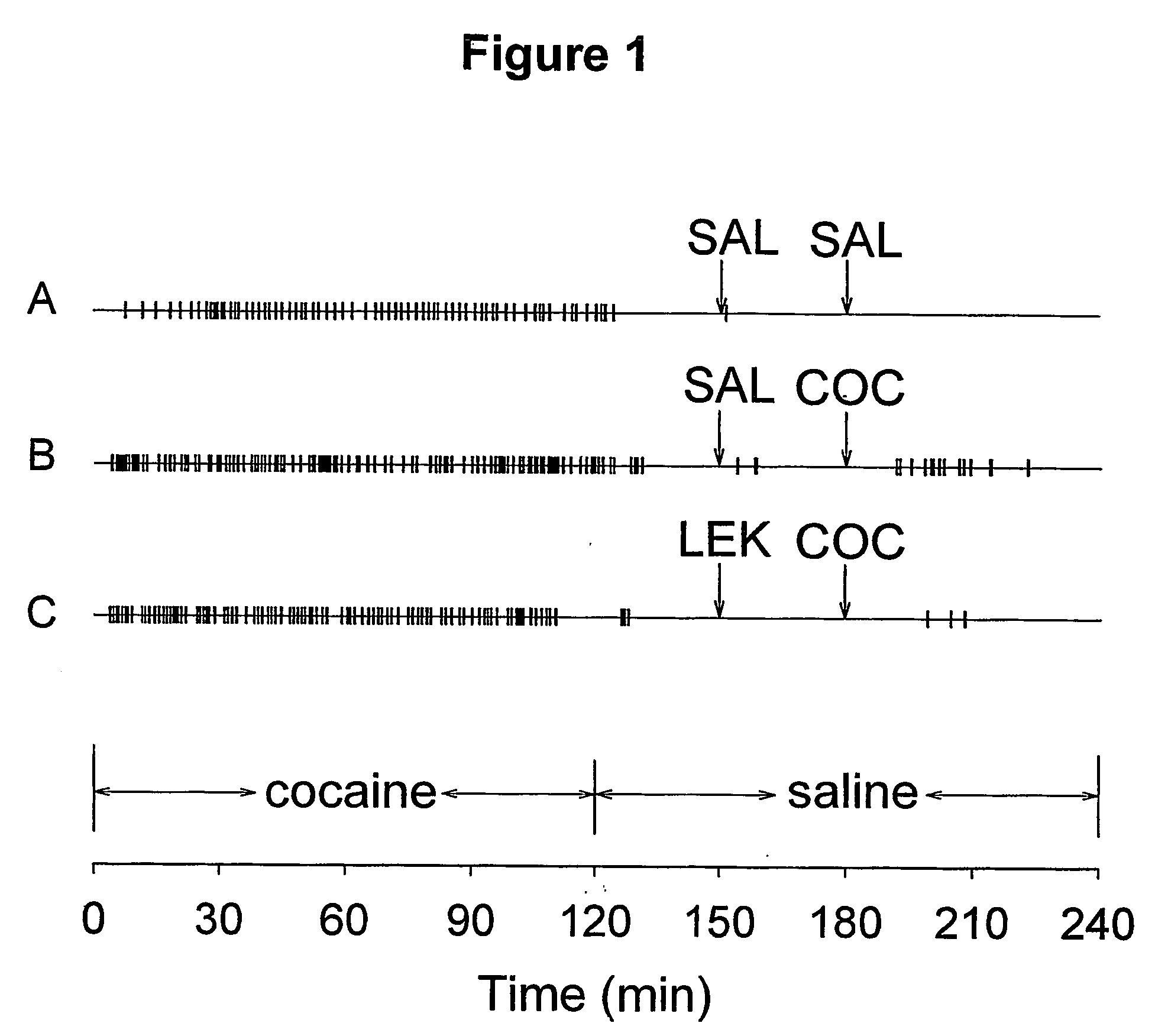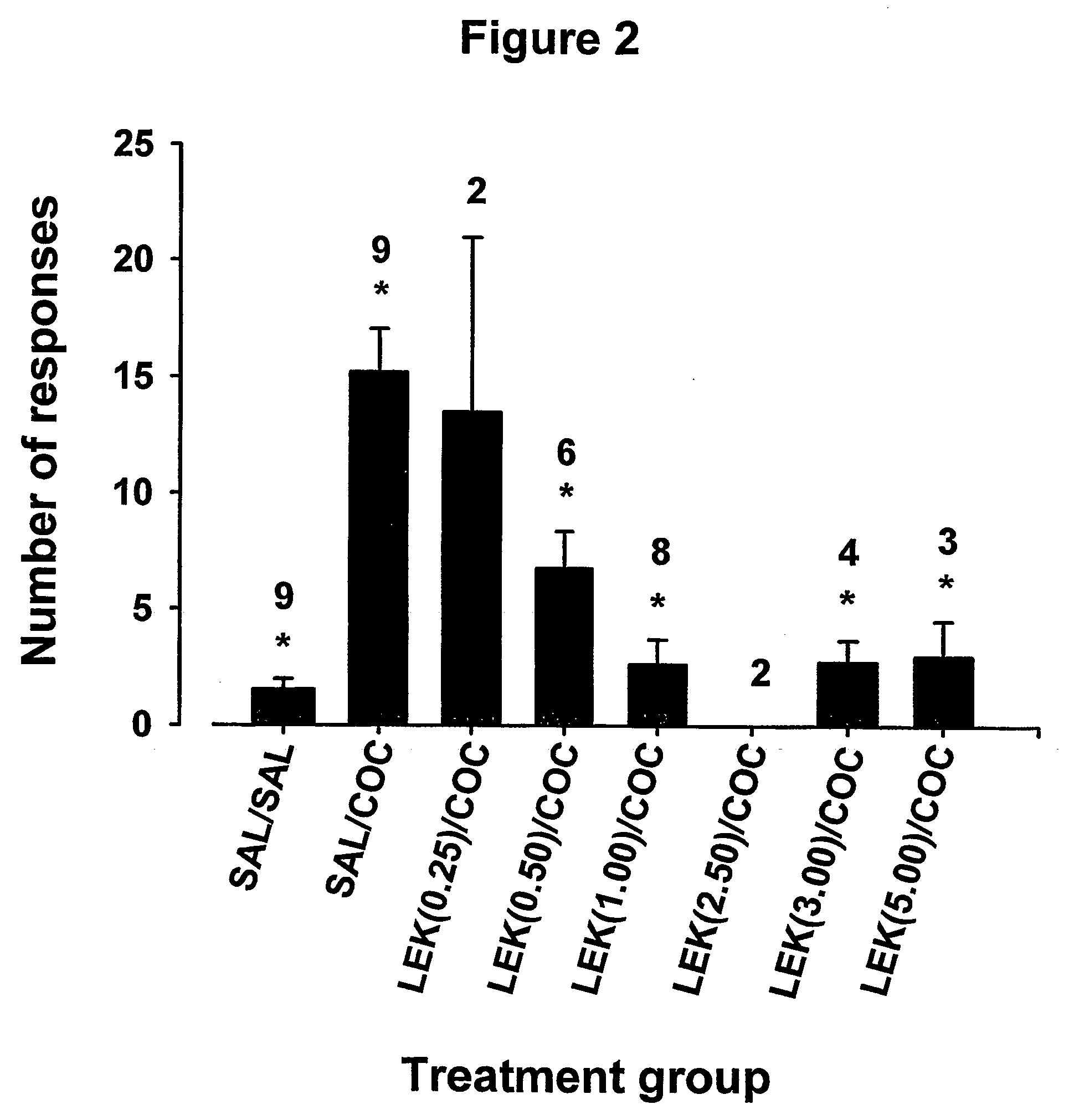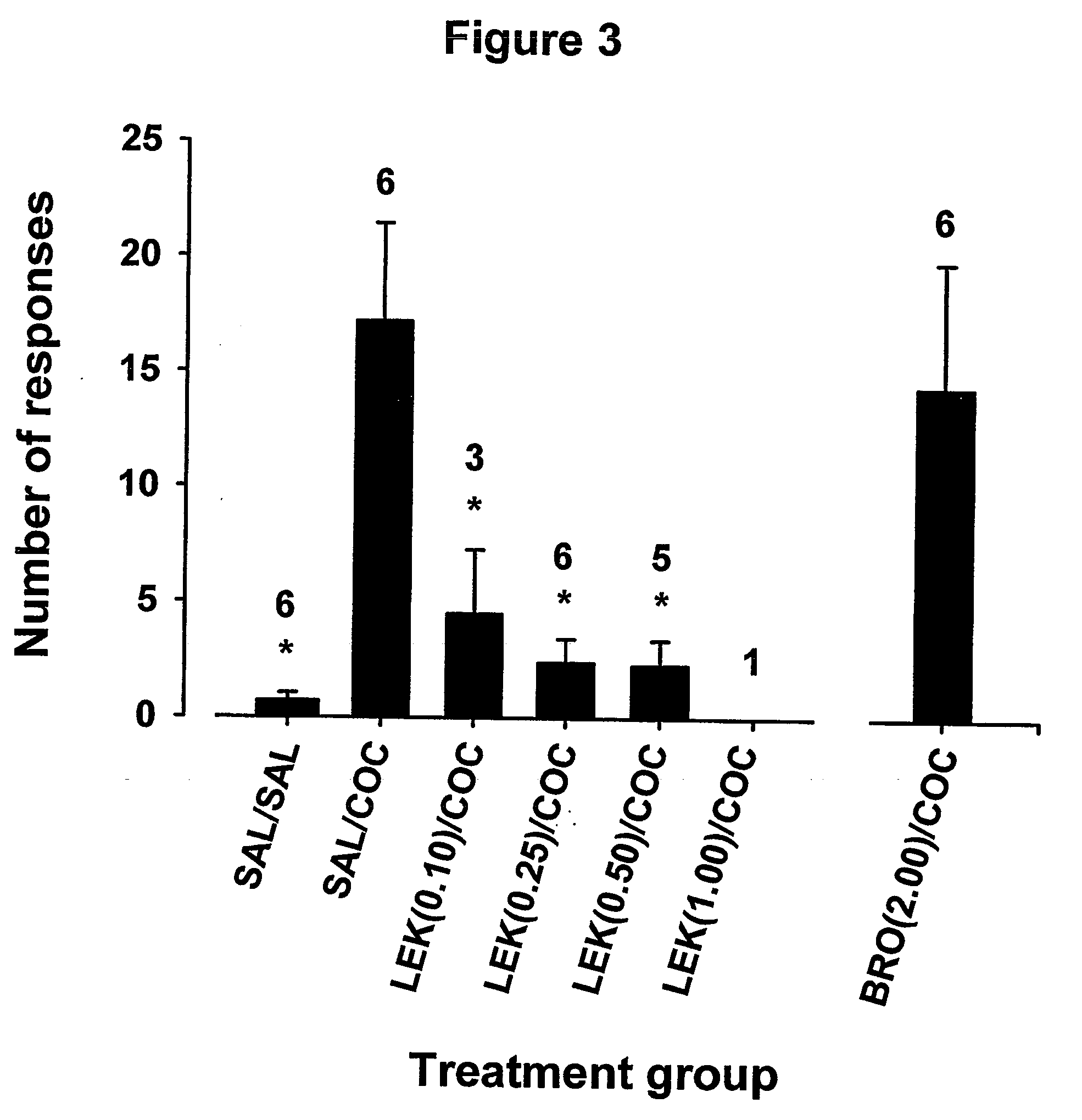Treatment of psychostimulant addiction
a psychostimulant and addiction technology, applied in the field of new methods for the treatment of psychostimulant addiction, can solve the problems of cocaine-induced self-injection, unsuitable for prevention, and preclinical studies of bromocriptine, an agonist of dopamine dsub>2 /sub>receptors, and achieve the desired
- Summary
- Abstract
- Description
- Claims
- Application Information
AI Technical Summary
Benefits of technology
Problems solved by technology
Method used
Image
Examples
example 1
[0027] Effects on Locomotor Activity
[0028] In the experiments in eight mice, intraperitoneal injection of LEK-8829 (in the form of bimaleate salt) inhibited the increased locomotor activity produced by intraperitoneal cocaine injection of 20 mg / kg. The inhibitory effect was dose dependent (ID50=1.2 mg / kg). Although LEK-8829 also inhibited the spontaneous locomotor activity (ED50=2.1 mg / kg), the ratio of ED50 / ID50, that was 1.8, suggested partial selectivity of the effect against cocaine.
example 2
[0029] Drug Discrimination Studies
[0030] In the experiments in six rats LEK-8829 (in the form of bimaleate salt) at doses of 0.25 to 2.5 mg / kg did not replace the discriminative stimulating effect of cocaine at dose of 10 mg / kg. On the other hand, in the same model, that is, in six rats, LEK-8829 (in the form of bimaleate salt at doses of 0.5 to 5 mg / kg partly inhibited the discriminative stimulating effect of cocaine at dose of 10 mg / kg. Partial antagonism of cocaine effect (56%) occurred at dose of 2.5 mg / kg. Discriminative stimulating effects of LEK-8829 (in the form of bimaleate salt) at doses of 0.032 to 0.32 mg / kg were also tested in four Rhesus monkeys that were trained to distinguish cocaine (0.4 mg / kg) from the physiological saline. Like rats, the monkeys did not recognize the discriminative stimulating effect of plain LEK-8829 in the sense of cocaine effect but they also did not discriminate the effect of LEK-8829 from the effect of the physiological saline. According to ...
example 3
[0031] Studies in Animal Models of Cocaine Self-Administration
[0032] The action of the active substance LEK-8829 (in the form of bimaleate salt) at doses ranging from 0.25 to 2.5 mg / kg on sensations of pleasure induced by cocaine self-administration was assessed as the effect on the rate of cocaine self-administration in the experiments in five rats. For determination of the specificity of the effect on cocaine, a solution of saccharin was used as a comparative stimulant. LEK-8829 in the dose range from 0.2.5 to 1.55 mg / kg produced a right shift of the curve in the ratio dose / response to cocaine (four of five animals), and also decreased the height of the curve in one animal. In the range of medium doses, LEK-8829 caused an increase in overall input of cocaine self-administration in three animals. The results indicate that LEK-8829 blocks euphoric stimulating effect of cocaine. LEK-8829 also influenced the input of saccharin (non-specific effect), however, compared to the effect on...
PUM
| Property | Measurement | Unit |
|---|---|---|
| temperature | aaaaa | aaaaa |
| time | aaaaa | aaaaa |
| composition | aaaaa | aaaaa |
Abstract
Description
Claims
Application Information
 Login to View More
Login to View More - R&D
- Intellectual Property
- Life Sciences
- Materials
- Tech Scout
- Unparalleled Data Quality
- Higher Quality Content
- 60% Fewer Hallucinations
Browse by: Latest US Patents, China's latest patents, Technical Efficacy Thesaurus, Application Domain, Technology Topic, Popular Technical Reports.
© 2025 PatSnap. All rights reserved.Legal|Privacy policy|Modern Slavery Act Transparency Statement|Sitemap|About US| Contact US: help@patsnap.com



